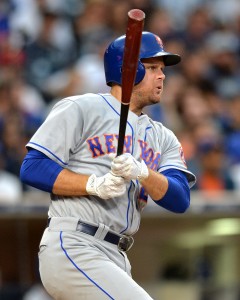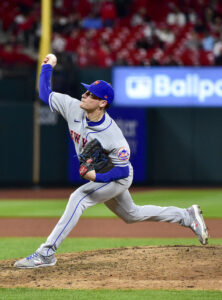Last week, MLBTR took an early look at offseason option decisions facing teams in the National League. We’re continuing our division by division series moving through the Junior Circuit. To round out the series, we move to the AL West. There are only five players in the division whose contracts contain options but they’re spread among every team aside from the Mariners.
Previous posts: NL East, NL Central, NL West, AL East, AL Central
Houston Astros
- Hector Neris: $8.5MM club option ($1MM buyout); converts to player option with 40 appearances in 2023
Neris’ option is presently a club provision, but it’s not likely to be for much longer. His free agent deal with the Astros allowed him to convert the third-year option into a player provision in a few ways — one of which was by making a combined 110 appearances between 2022-23. The bullpen workhorse pitched 70 times last year, leaving him just 40 shy of the mark entering 2023. (As is common for provisions like these, he’ll also have to pass a physical at season’s end.)
Manager Dusty Baker has already called upon Neris 25 times this season. He needs just 15 more outings to turn this into a player provision. That’s a lock barring a major injury, with Neris potentially triggering the mark by the All-Star Break.
That could prove lucrative, as he’s building a strong case for another multi-year free agent deal. Neris carries a 1.13 ERA over 24 frames. While he’s obviously not going to keep preventing runs at quite that pace, he’s fanning over 31% of opponents and picking up swinging strikes on a huge 15.4% of his offerings. Even nearing age 34, Neris could push for a two-year deal in the $15-20MM range, where the likes of Joe Kelly and Chris Martin have landed in recent seasons.
Los Angeles Angels
- Aaron Loup: $7.5MM club option ($2.5MM buyout)
The Halos signed Loup to a two-year, $17MM free agent deal over the 2021-22 offseason. He was effective enough in year one, though the Angels probably expected better than a 3.84 ERA with a 20% strikeout rate over 58 2/3 innings. That’d be a marked improvement over Loup’s early results this year, however. The 35-year-old has allowed 12 runs (10 earned) with 11 strikeouts and six walks over 13 1/3 frames. Los Angeles looks likely to take the buyout.
Oakland A’s
- Drew Rucinski: $5MM club option (no buyout)
Oakland took a low-cost flier on Rucinski last winter. They signed him to a $3MM guarantee with a promised rotation spot after he’d been an effective starter in South Korea for four seasons. The 34-year-old righty hasn’t had a chance to get on track. He began the year on the injured list with a hamstring strain. He returned to make four starts and was tagged for 22 runs with a ghastly 6:14 strikeout-to-walk ratio in 18 innings. Rucinski went back on the IL a few weeks ago with an illness. It’s been a disastrous first couple months and the option is trending towards a declination.
- Manny Piña: $4MM club option (no buyout)
The A’s acquired Piña as a veteran complement to Shea Langeliers in the Sean Murphy trade. He’d been limited to five games last year thanks to a left wrist injury that required surgery. Complications with the wrist flared up in Spring Training and he’s spent this season on the IL as well. The A’s are likely to cut him loose at year’s end.
Texas Rangers
- José Leclerc: $6.25MM club option ($500K buyout)
At his best, Leclerc looks like a quality high-leverage reliever. He misses tons of bats and routinely pushes or exceeds a 30% strikeout rate. Yet he’s paired those whiffs with plenty of free passes. Control has become especially problematic this year, as he’s dished out walks to almost 16% of opponents. Leclerc is carrying a sub-3.00 ERA but benefitting from a .256 average on balls in play.
Leclerc started slowly last season after working back from Tommy John surgery. He caught fire down the stretch, leading Texas to exercise a $6MM option for 2023. There’s still time for him to repeat that pattern but he’ll have to dial in the strike-throwing to do so.


